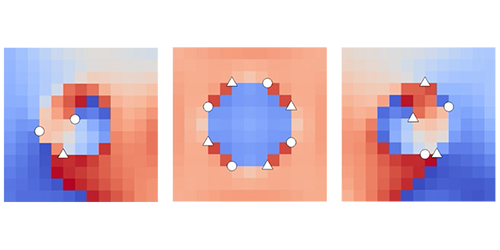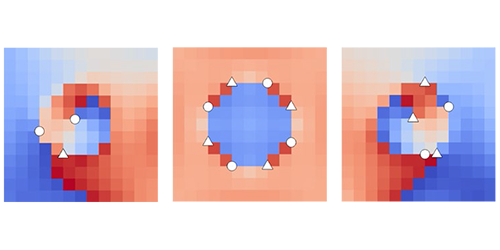Three-Way Spin in Photonic Lattice
Specially engineered photonic lattices—composed of weakly coupled waveguides—can create pseudospins, analogous to the spin states of particles, in light waves . Lattices with two pseudospin states have been used to study fermionic (spin-1/2) systems, like graphene. A new study explores a photonic lattice with three pseudospin states, corresponding to a bosonic (spin-1) system. The researchers show that the light passing through the lattice emerges with pseudospin-dependent orbital angular momentum, as evidenced by conical and vortex-shaped diffraction patterns.
Studies of graphene have shown that many of its complex behaviors could be explained by assuming that its electronic states have an extra spin-like degree of freedom. This pseudospin is not directly observable in graphene, but researchers have observed two-state pseudospin in photonic lattices that have waveguides arranged in graphene-like hexagonal patterns.
Falko Diebel from the University of Münster, Germany, and colleagues have now made similar observations of three-state pseudospin in a photonic lattice, fabricated inside a slab of silica with a laser-writing technique. In this case, the waveguides are arranged in a square pattern, called a Lieb lattice, which contains three sublattices (periodic patterns within the overall pattern). Each sublattice has a unique light-dispersion relation that characterizes the pseudospin. Using a structured light beam, the researchers excited one pseudospin state at the lattice input and then recorded the intensity and phase of the beam’s three pseudospin-state components at the output. The intensity exhibited ring-shaped patterns (conical diffraction), while the phase showed swirls (optical vortices). These signatures of orbital angular momentum depended on both the input and output pseudospin states. The results could provide insight into angular-momentum generation in photons (bosons with two spin states).
This research is published in Physical Review Letters.
–Michael Schirber





